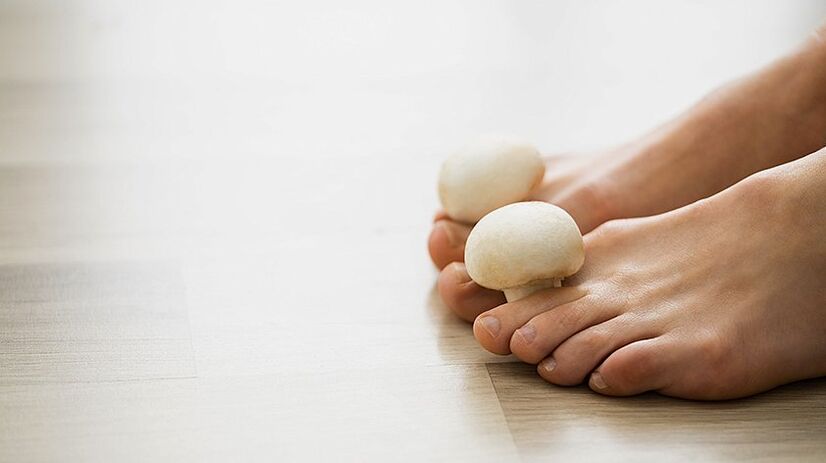
Onychomycosis, or as it is popularly called, nail fungus, is damage to the nail plate and surrounding structures by fungal infection. Nails infected with fungus change color and transparency, become brittle, rough, thicken, flake and fall off. At this time, the tissue under or near the nail may become red and swollen.
Nail fungus is a very common condition. According to statistics, onychomycosis affects 8 to 26. 9% of the world's population, and the number of people with this diagnosis in Russia ranges from 4. 5 to 15 million people.
Typically, onychomycosis is detected in patients over 40 years of age. At the same time, there are no uniform statistics on the incidence of the disease in men and women, the opinions of the authors differ. In Russia, nail fungus is more common in men. At the same time, women go to the doctor one and a half times - perhaps this is explained by a more careful attitude to the health and appearance of the nails on the feet and hands. The photos may seem shocking.
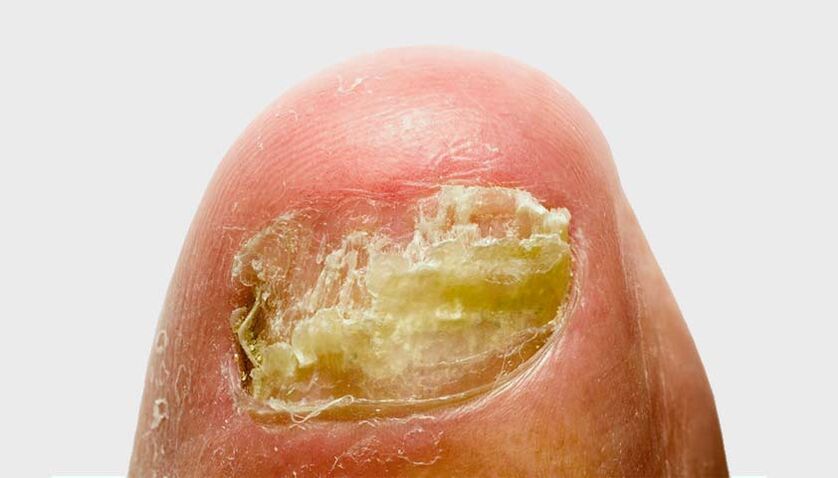
In about 80% of cases, the disease affects the toenails. Less often, onychomycosis affects the nails. Researchers have identified factors that significantly increase the risk of developing onychomycosis. They can be roughly divided into two groups.
External (exogenous) risk factors for the development of onychomycosis:
- nail injuries;
- wearing tight, non-breathable shoes for a long time;
- stay in a hot, humid climate.
Internal (endogenous) risk factors for the development of onychomycosis:
- age of the patient: the disease is more common in people over 40 years old;
- overweight;
- decreased immunity;
- related diseases: diabetes mellitus, thyroid disease, varicose veins;
- flat feet and other foot deformities;
- long-term use of certain drugs: antibiotics, cytostatics, corticosteroids.
The family factor plays a special role in the spread of onychomycosis. According to statistics, 55% of patients had nail fungus in the family.
You can get infected with onychomycosis through direct contact with an infected person, as well as through household items - clothes, shoes, hygiene products (clothes, towels).
In public places, infection occurs mainly in gyms, baths, saunas and swimming pools. Scales with pathogenic fungi grow on floors, benches, paths and railings. In such conditions, mushrooms continue to multiply and soon find new hosts.

Fungi that cause onychomycosis thrive in high humidity conditions. In addition, if the master does not follow the rules of hygiene and sterilization of tools, you can catch onychomycosis in a manicure or pedicure salon.
Causes of onychomycosis
About 50 species of fungi that can infect the nail plate are known. At the same time, dermatomycetes from the genus Trichophyton account for 80-90% of cases of onychomycosis of the feet and 36% of onychomycosis of the hands.

Dermatomycetes are microscopic fungi that attack the skin, hair and nails. The second most common causative agent of onychomycosis is Candida (candida) yeasts. Candidiasis of nails occurs in 5-10% of cases. Less common causative agents of onychomycosis are mold fungi - Aspergillus (Aspergillus), Fusarium (Fusarium), Scopulariopsis (Spoculariopsis).
In practice, the nail plate is damaged by several types of fungus at once. Often it is a combination of two types of dermatomycetes or variations of "dermatomycetes + yeast", "dermatomycetes + mold". In about 10% of cases, the patient is infected with three or more types of fungi.
Types of onychomycosis
In Russian dermatology, three types of onychomycosis are distinguished depending on the clinical manifestations of the disease.
The main types of onychomycosis:
- normotrophic: the shape of the nail plate does not change, whitish and yellowish stripes appear in the thickness of the nail;
- hypertrophic: the nail plate noticeably thickens, becomes brittle, and the edges become curved;
- dystrophic: the nail plate thins and peels off from the nail bed.
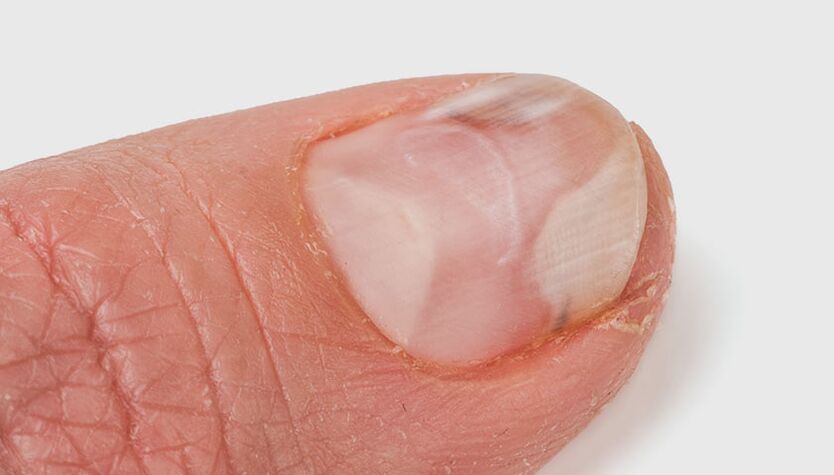
There are four types of onychomycosis, depending on how the fungus spreads to the skin and nails.
Types of onychomycosis depending on the place of penetration and spread of pathogenic fungi in the nail plate:
- surface white: the fungus colonizes the upper part of the nail plate. Whitish spots appear on the nail. As the infection spreads, the nail turns gray-brown and begins to crumble;
- distal-lateral subungual: the fungus penetrates the skin in the area of the nail folds or the free edge of the nail. The nail plate thickens, turns yellow, splits, then moves away from the nail bed;
- proximal subungual: the fungus spreads from the skin and nail folds to the nail plate and deeper. Spots appear in the nail pit and nail bed area. The nail plate peels off;
- general dystrophic: the entire nail plate is affected. It appears sharply thickened and acquires a dirty yellow color. The nail surface becomes uneven.
Once in the nail plate or in the surrounding structures, the colony of fungi begins to grow towards the matrix - the growth zone located behind the nail bed. The faster the nail grows, the more effectively it suppresses the fungal colony and the faster it recovers from onychomycosis. This mechanism also explains the fact that nail fungus mainly affects people over 40 years old: their nails grow much slower than those of young people.
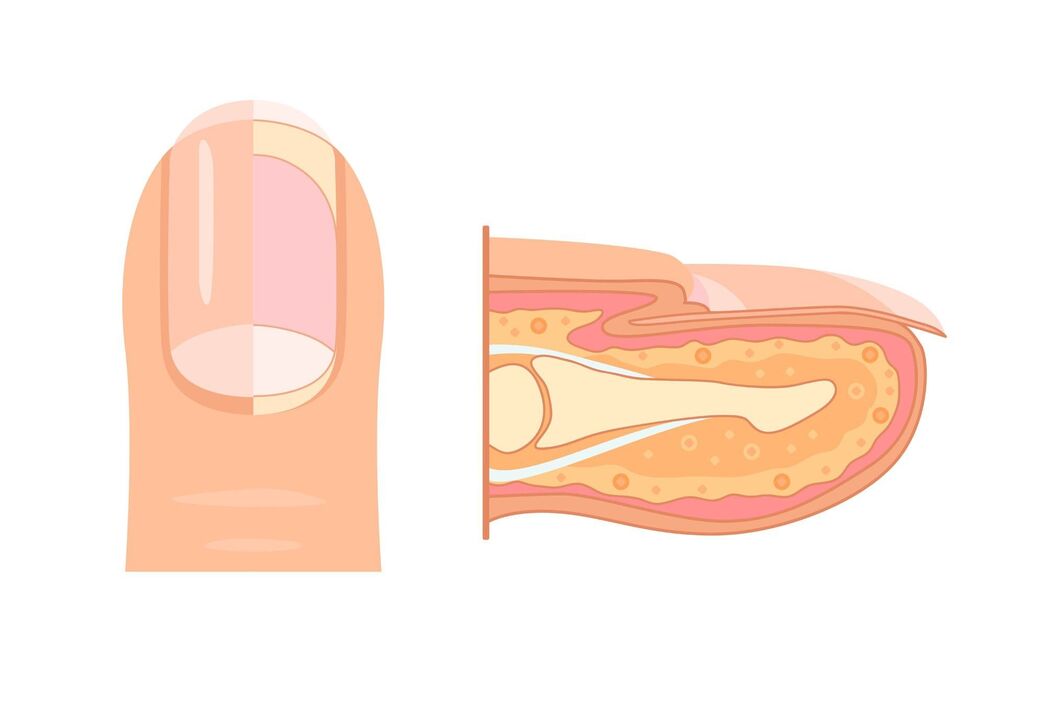
Symptoms of onychomycosis
As onychomycosis progresses, the symptoms of the disease become more pronounced.
The main symptoms of onychomycosis:
- change the color of the nail plate to yellow, black, green, brown or gray;
- separation of the nail plate from the bed;
- change in the thickness of the nail plate;
- koilonychia - the nail is concave in the shape of a teaspoon;
- onychogryphosis - the nail bends like the beak of a bird of prey;
- thickening of the nail bed;
- changes in the surface of the nail plate: the formation of pits, grooves, ridges;
- inflammation of the nail bed.
Complications of onychomycosis
Without treatment, onychomycosis in diabetic patients can cause serious complications, such as diabetic foot - ulcerative defects of soft tissues with damage to tendons and bone structures.
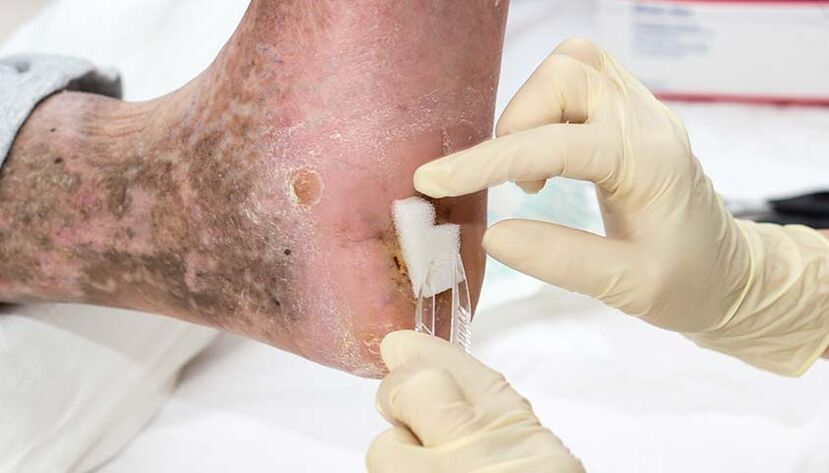
In people with long-term fungal infection, as well as against the background of immunodeficiency, onychomycosis can cause a severe allergic reaction. This is explained by the fact that the fungal colony and its metabolic products act as sensitizers - triggers to which the body reacts with increased sensitivity.
As a result, an allergic reaction occurs, which can have different manifestations: a more severe course of bronchial asthma, the appearance of foci of microbial eczema and the development of urticaria.
Common complications of onychomycosis:
- diabetic foot;
- allergic reactions;
- chronic erysipelas of the extremities is an infectious skin lesion;
- lymphostasis - retention of lymphatic fluid in tissues;
- elephantiasis (elephantiasis) is a lymphatic edema that progresses simultaneously with the replacement of subcutaneous adipose tissue with connective tissue.
Diagnosis of onychomycosis
Diagnosis and treatment of onychomycosis is carried out by a dermatologist. During the reception, the doctor will assess the condition of the patient's nails, skin, mucous membrane and hair. He will perform a dermatoscopy and examine the skin under a magnifying glass. In parallel with the examination, the specialist will collect anamnesis and ask the patient about lifestyle, nutritional quality, household habits and care procedures. If you suspect onychomycosis, your doctor will order laboratory tests. Examination of scrapings from the nail plate will rule out or confirm a fungal infection. The doctor may also send the patient for microscopic examination and culture.
Diabetes mellitus can significantly worsen the course of onychomycosis and cause serious complications. Comprehensive studies can exclude or confirm this diagnosis. A complete blood count helps to assess the general condition of the patient.
Treatment of onychomycosis
Treatment of onychomycosis can be local, systemic or combined. Also, corrective therapy aimed at eliminating accompanying diseases may be required. In local therapy, antifungal drugs are applied directly to the nail plate and nail folds. In this case, the drug is concentrated on the surface of the nail and does not penetrate into the bloodstream, eliminating the risk of side effects.
However, with local therapy, the drug cannot always reach the fungal colony, especially if it is located deep in the nail bed. Before applying local drugs, it is necessary to remove the affected part of the nail. At home, you can use a keratolytic patch - it contains a small amount of acid and can soften the nail.
Systemic therapy allows the antifungal agent to penetrate the affected area through the blood, regardless of how deeply the fungal colony is hidden.
The main types of systemic drugs for the treatment of onychomycosis:
- antifungal agents;
- antiseptics - have both antifungal and antibacterial effects;
- multicomponent drugs may also contain anti-inflammatory substances.
The treatment regimen and the dosage of the drug are determined by the doctor. In mixed therapy, systemic and local treatment is carried out at the same time. This allows to increase the effectiveness of treatment and shorten its duration.
Corrective therapy is aimed at treating concomitant diseases that can complicate the course of onychomycosis. These are, first of all, diabetes mellitus, thyroid pathologies and vascular diseases (for example, varicose veins). Treatment tactics are determined by the doctor and other specialized specialists who manage the patient together in this case.
Prognosis and prevention
If you consult a doctor in time, the prognosis for onychomycosis is favorable: 80% of patients treated with antifungal drugs get rid of the disease forever. To prevent onychomycosis, it is necessary to protect the feet and hands from irritating and traumatic factors and to strengthen the immune system.
Measures to prevent onychomycosis:
- change socks daily or more often if your feet are sweaty or wet;
- air or dry shoes after wearing;
- do not wear shared slippers when visiting;
- do not wear shoes on bare feet in the store;
- use a personal towel for your feet;
- use personal tools for nail care (tweezers, files);
- wear shoes in the pool or sauna;
- control the variety of your diet;
- avoid stressful situations.























